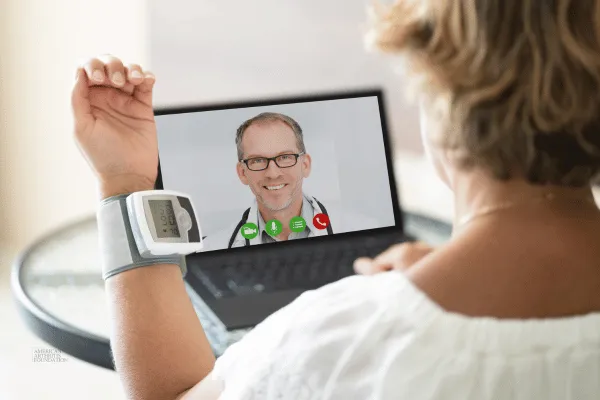Support and Learning Resources for Young Arthritis Patients
Close to 300,000 young individuals in the U.S. are affected by juvenile idiopathic arthritis (JIA) and related pediatric rheumatic conditions. These autoimmune disorders can impact joints, skin, eyes, and even internal organs. While receiving such a diagnosis might feel overwhelming, it's comforting to know that there are effective treatments to help manage the condition.
Juvenile arthritis encompasses a range of rheumatic conditions that affect children 16 years and younger. It's important to note that these aren't simply adult diseases appearing in kids; they have unique characteristics and require different treatment approaches. Among these conditions, juvenile idiopathic arthritis (formerly known as juvenile rheumatoid arthritis) is the most prevalent. Other examples include juvenile psoriatic arthritis, pediatric lupus, and several more.

Can Telerehabilitation Be as Effective as In-Person Therapy for Knee Osteoarthritis?
For those living with knee osteoarthritis (OA), managing chronic pain and maintaining mobility are key priorities. Traditionally, in-person physiotherapy has been the go-to solution, but a recent study suggests there’s another equally effective option: telerehabilitation. This innovative approach allows patients to receive therapy via video conferencing, and the results are as promising as they are exciting.
What Did the Study Reveal?
The PEAK (Physiotherapy Exercise and Physical Activity for Knee Osteoarthritis) trial sought to compare the effectiveness of in-person physiotherapy consultations with telerehabilitation for managing knee osteoarthritis. Conducted in Australia, the study involved nearly 400 adults with chronic knee pain, randomly divided into two groups:
In-Person Care: Patients attended five face-to-face sessions with a physiotherapist.
Telerehabilitation: Patients participated in five video consultations with a physiotherapist.
Over three months, both groups focused on the same core components of OA care—exercise, strengthening, physical activity, and education. Researchers measured their progress based on pain levels (rated from 0 to 10) and functional improvements using a widely recognized osteoarthritis index.
The Findings
The results were clear: telerehabilitation was non-inferior to in-person care. In simpler terms, it was just as effective. Here are the highlights:
Pain Reduction: Both groups experienced significant pain relief, with similar average reductions (2.98 for in-person vs. 3.14 for telerehabilitation).
Improved Function: Functional improvements were also comparable, with the in-person group scoring an average improvement of 10.20 and the telerehabilitation group scoring 10.75.
Safety: Both approaches were equally safe, with no serious adverse events reported.
The study supports the idea that patients can achieve the same benefits from virtual therapy as they would from in-person sessions.
Why Is This Important?
This research is a game-changer for OA management, especially for patients who face barriers to accessing traditional physiotherapy. Here’s why telerehabilitation matters:
Improved Accessibility: For individuals living in rural areas, those with mobility issues, or those unable to travel due to personal constraints, telerehabilitation offers a convenient solution.
Continuity During Crises: The COVID-19 pandemic highlighted the importance of remote care. Telerehabilitation ensures patients can continue therapy even during disruptions.
Flexibility: Video consultations allow patients to fit therapy into their schedules without the added stress of commuting.
For people living with osteoarthritis, this approach opens up new opportunities to stay active, reduce pain, and improve their quality of life.
Challenges and Future Considerations
While the findings are promising, there are a few things to consider:
Participant Demographics: The study focused on English-speaking Australians, so it may not represent diverse populations.
Eligibility Criteria: Patients had to meet specific pain and mobility requirements, meaning those with milder symptoms weren’t included.
Study Context: Both patients and physiotherapists were aware of their assignments, which might have influenced the results.
Researchers emphasize the need for further studies to explore telerehabilitation’s effectiveness in broader populations and its potential for conditions like back and shoulder pain.
A Bright Future for Telerehabilitation
This study shows that telerehabilitation isn’t just a convenient alternative—it’s a real option for managing knee osteoarthritis effectively. By combining accessibility with proven results, it has the potential to revolutionize arthritis care for millions.
At the American Arthritis Foundation, we’re excited about these findings and committed to supporting research that improves arthritis care. Whether it’s through technology-driven solutions like telerehabilitation or other advancements, our goal is to empower patients to live their best lives.
Have you tried telerehabilitation for your arthritis care? We’d love to hear about your experience! Let’s keep the conversation going and explore how innovative treatments can make a difference.
Stay informed, stay active, and keep moving forward.
Have a question?
We're Here to Help
By providing my phone number, I agree to receive text messages from the business.


